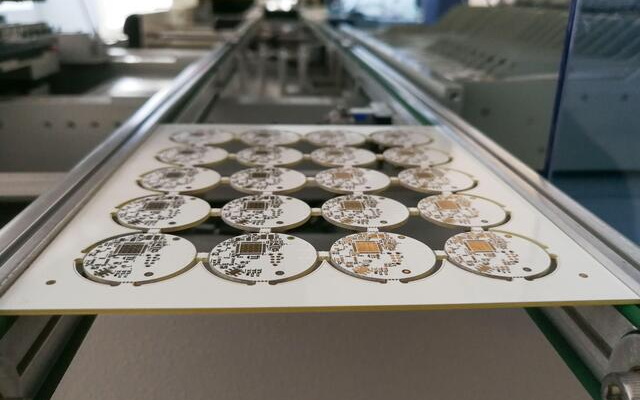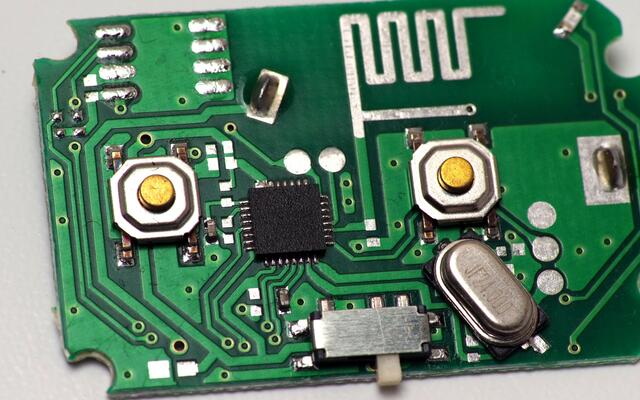Content Menu
● The Role of Desktop SMT Reflow Ovens in PCB Production
>> What is an SMT Reflow Oven?
>> Importance in the PCB Manufacturing Process
● Benefits of Using a Desktop SMT Reflow Oven
>> 1. Compact Size and Portability
>> 2. Cost-Effectiveness
>> 3. Precision and Consistency
>> 4. Versatility
>> 5. Ease of Use
● Key Features to Look For in a Desktop SMT Reflow Oven
● Applications of Desktop SMT Reflow Ovens
● How Desktop SMT Reflow Ovens Enhance Efficiency
>> Automation
>> Energy Efficiency
>> Reduced Downtime
● Integration with SMT Assembly Lines
● Choosing the Right Desktop SMT Reflow Oven
● Future Trends in Desktop SMT Reflow Technology
● Conclusion
● Frequently Asked Questions (FAQ)
>> 1. What is the primary purpose of an SMT reflow oven?
>> 2. Can desktop SMT reflow ovens handle lead-free soldering?
>> 3. What factors should I consider when buying a desktop SMT reflow oven?
>> 4. Are desktop SMT reflow ovens suitable for mass production?
>> 5. How do I maintain my desktop SMT reflow oven?
In the rapidly evolving electronics manufacturing industry, efficiency and precision are paramount. When it comes to printed circuit board (PCB) production, desktop SMT reflow ovens have become indispensable tools for achieving high-quality soldering results. This article explores the reasons why investing in a desktop SMT reflow oven is a wise choice for PCB production, highlighting its benefits, applications, and features.

The Role of Desktop SMT Reflow Ovens in PCB Production
What is an SMT Reflow Oven?
An SMT reflow oven is a specialized heating device used to solder surface-mount components onto PCBs. It employs controlled temperature zones to heat solder paste, ensuring reliable connections between electronic components and the board. Desktop models are compact versions of industrial reflow ovens, designed for prototyping or low-to-medium production volumes.
Importance in the PCB Manufacturing Process
Desktop SMT reflow ovens play a critical role in the Surface Mount Technology (SMT) assembly process. After components are placed on a PCB using an SMT machine, the board passes through the reflow oven. Here, precise heat profiles melt the solder paste, creating strong and consistent joints. This process is essential for:
- Ensuring electrical reliability.
- Reducing manual soldering errors.
- Meeting industry standards for lead-free soldering.
Benefits of Using a Desktop SMT Reflow Oven
1. Compact Size and Portability
Desktop SMT reflow ovens are ideal for small-scale operations or prototyping labs. Their compact design allows them to fit on workbenches without occupying excessive space. This portability enables easy relocation within a workspace, making them perfect for dynamic production environments.
2. Cost-Effectiveness
Compared to industrial reflow ovens, desktop models are significantly more affordable while still offering advanced features like temperature profiling and zone control. This cost-effectiveness makes them accessible to startups, small businesses, and educational institutions, allowing for in-house PCB production without substantial capital investment.
3. Precision and Consistency
Modern desktop SMT reflow ovens provide precise temperature control across multiple zones, ensuring uniform heating and reducing defects in solder joints. This level of precision is crucial for producing high-quality PCBs with minimal rework requirements.
4. Versatility
These ovens can handle various soldering tasks, including lead-free and lead-based processes, making them suitable for diverse PCB assembly needs. Their versatility extends to accommodating different board sizes and component types, from simple single-layer boards to complex multi-layer designs.
5. Ease of Use
With user-friendly interfaces and programmable profiles, desktop reflow ovens simplify the soldering process, even for beginners. This ease of use reduces the learning curve and allows operators to quickly become proficient in PCB assembly techniques.
Key Features to Look For in a Desktop SMT Reflow Oven
When selecting a desktop SMT reflow oven for PCB production, consider the following features:
1. Temperature Zones: Multiple individually controlled zones allow for precise temperature adjustments during preheating, soaking, and reflow stages. Look for ovens with at least 3-4 zones for optimal control.
2. Lead-Free Compatibility: Ensure the oven supports higher temperatures required for RoHS-compliant lead-free soldering. This typically means peak temperatures of up to 260°C (500°F).
3. Uniform Heating: Look for models with convection or horizontal airflow technology to prevent uneven heating. This ensures consistent solder joint quality across the entire PCB.
4. Programmable Profiles: The ability to save and recall temperature profiles enhances efficiency. Advanced models may offer profile storage for multiple product types.
5. Cooling Mechanism: A built-in cooling section helps solidify solder joints quickly and reduces thermal stress on components. This feature is crucial for preventing warpage and ensuring long-term reliability of the PCB.
6. Temperature Accuracy: High-quality desktop SMT reflow ovens should maintain temperature accuracy within ±1°C to ±3°C for consistent results.
7. Data Logging and Monitoring: Some advanced models offer real-time temperature monitoring and data logging capabilities, which are valuable for quality control and process optimization.

Applications of Desktop SMT Reflow Ovens
Desktop SMT reflow ovens are versatile tools used in various applications:
- Prototyping: Ideal for testing small batches of PCBs before mass production. This allows engineers to quickly iterate designs and verify functionality.
- Low-Volume Production: Suitable for startups or small businesses producing limited quantities of specialized electronic products.
- Educational Purposes: Used in academic settings to teach students about PCB assembly processes and surface mount technology.
- Repair and Rework: Handy for fixing defective boards or modifying existing designs. The precise temperature control allows for safe component removal and replacement.
- Research and Development: Essential for electronics R&D labs where frequent design changes and small-scale production are common.
How Desktop SMT Reflow Ovens Enhance Efficiency
Automation
Desktop SMT reflow ovens automate the soldering process, eliminating the need for manual intervention and reducing errors. This automation leads to:
- Increased throughput
- Consistent quality across batches
- Reduced labor costs
Energy Efficiency
Modern models are designed to consume less energy while maintaining optimal performance, making them environmentally friendly. Features contributing to energy efficiency include:
- Rapid heating elements
- Insulated chambers
- Smart power management systems
Reduced Downtime
With quick setup times and minimal maintenance requirements, these ovens ensure uninterrupted production workflows. Benefits include:
- Fast profile changes between different PCB types
- Easy cleaning and maintenance procedures
- Reliable operation with fewer breakdowns
Integration with SMT Assembly Lines
Desktop SMT reflow ovens can be seamlessly integrated into small-scale SMT assembly lines. This integration typically involves:
1. Pick and Place Machine: Components are accurately placed on the PCB.
2. Desktop SMT Reflow Oven: The populated PCB undergoes the reflow soldering process.
3. Inspection Station: Automated optical inspection (AOI) or manual inspection ensures quality.
This integrated approach allows for a complete SMT assembly solution in a compact footprint, ideal for space-constrained environments.
Choosing the Right Desktop SMT Reflow Oven
Selecting the appropriate desktop SMT reflow oven depends on several factors:
- Production Volume: Consider your current and future production needs.
- PCB Size: Ensure the oven can accommodate your largest PCB designs.
- Component Types: Some components may require specific temperature profiles.
- Budget: Balance features with cost constraints.
- Support and Warranty: Look for manufacturers offering robust technical support and warranty coverage.
Future Trends in Desktop SMT Reflow Technology
The field of desktop SMT reflow ovens continues to evolve, with several emerging trends:
- IoT Integration: Smart ovens with internet connectivity for remote monitoring and control.
- AI-Assisted Profiling: Machine learning algorithms to optimize temperature profiles automatically.
- Enhanced Energy Efficiency: Development of even more energy-efficient heating technologies.
- Improved User Interfaces: Touchscreen displays and intuitive software for easier operation.
These advancements promise to make desktop SMT reflow ovens even more powerful and user-friendly in the future.
Conclusion
Investing in a desktop SMT reflow oven is a strategic decision for anyone involved in PCB production. These compact yet powerful machines offer precision, consistency, and versatility at an affordable cost. Whether you're a hobbyist working on prototypes or a small business aiming to scale up production, a desktop SMT reflow oven can significantly enhance your manufacturing capabilities.
By providing automated soldering, energy efficiency, and reduced downtime, these ovens contribute to improved product quality and increased productivity. As technology continues to advance, desktop SMT reflow ovens will likely play an even more crucial role in the future of electronics manufacturing, making them a wise investment for forward-thinking businesses and individuals in the PCB production industry.

Frequently Asked Questions (FAQ)
1. What is the primary purpose of an SMT reflow oven?
An SMT reflow oven is used to solder surface-mount components onto PCBs by heating the solder paste to its melting point in a controlled environment. This process ensures strong and reliable connections between components and the board.
2. Can desktop SMT reflow ovens handle lead-free soldering?
Yes, most modern desktop models are compatible with lead-free soldering processes, which require higher temperatures due to RoHS compliance. These ovens are designed to reach and maintain the higher temperatures needed for lead-free solder pastes.
3. What factors should I consider when buying a desktop SMT reflow oven?
Key factors include temperature zone control, uniform heating technology, programmable profiles, size compatibility with your PCBs, and cooling mechanisms. Additionally, consider energy efficiency, ease of use, and the manufacturer's reputation for support and reliability.
4. Are desktop SMT reflow ovens suitable for mass production?
While they are ideal for prototyping and low-to-medium volume production, desktop models may not be suitable for high-volume manufacturing due to their size limitations. However, they can be an excellent starting point for businesses looking to scale up their production gradually.
5. How do I maintain my desktop SMT reflow oven?
Regular maintenance includes cleaning heating elements and fans, checking temperature sensors for accuracy, and updating software if applicable. It's also important to periodically calibrate the oven to ensure consistent performance and follow the manufacturer's guidelines for preventive maintenance.




















